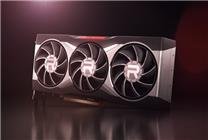AMD’s Driver Update: A Shift in Focus from RDNA Generations
Summary:
- AMD has released the Adrenalin Edition 25.10.2 driver, discontinuing performance optimization for RDNA first and second generation graphics cards.
- Future driver updates will primarily target the latest RDNA3 and RDNA4 architectures, focusing on RX 7000 and RX 9000 series graphics cards.
- The shift raises concerns among RX 6000 series users, who feel their cards still have competitive potential.
On October 30, AMD unveiled its latest driver update, the AMD Software: Adrenalin Edition 25.10.2, marking a pivotal moment in the company’s graphics card support narrative. Historically, AMD has forged a reputation for providing robust support for its graphics card lineups, particularly the RDNA (Radeon DNA) architecture. However, this new driver signifies a strategic withdrawal from performance optimization for the first and second generations of RDNA architecture, specifically impacting the RX 5000 and RX 6000 series graphics cards.
Key Features of the Adrenalin Edition 25.10.2 Driver
Primarily designed to enhance gaming experiences with AAA titles such as "Battlefield 6" and "Vampire: The Masquerade – Bloodlines 2," this latest driver supports advanced features for the newly released RX 9000 series graphics cards. One notable introduction is the Work Graphs function, which provides additional analytics for users aiming to optimize their gaming setup.
However, for long-time users of the RX 5000 and RX 6000 series cards, this update represents a significant shift, as AMD has made the decision to limit performance enhancements. Instead, future driver releases for these generations will focus largely on security patches and bug fixes, relegating these cards to a maintenance phase rather than an active improvement phase.
Future Focus on Newer Architectures
This strategic pivot towards newer architectures—namely RDNA3 and the upcoming RDNA4—is reflective of AMD’s commitment to keeping pace with the fast-evolving gaming landscape. Drivers optimized for the RX 7000 and RX 9000 series will soon become the primary focal point. Given the impressive advancements in technology in these newer generations, this decision may come as little surprise to those following the trends in graphics card performance and capability.
Community Reactions and Implications
Responses from the gaming community and RX 6000 series users have been mixed. For many, the RX 6000 series cards still deliver robust performance and are far from outdated. The decision to cut off targeted optimization feels hasty given the capabilities these cards still possess, leaving many users questioning AMD’s rationale.
As these graphics cards continue to represent a significant investment for many gamers, reliance on continued support remains a critical concern. Users are left to ponder whether they should consider upgrading sooner than anticipated or if they can maintain competitiveness using their existing hardware.
Conclusion: A New Era for AMD Graphics Drivers
In summary, the release of the Adrenalin Edition 25.10.2 driver marks a significant departure for AMD as it reorients its focus towards newer graphics card architectures. While it’s crucial for AMD to remain competitive in the graphics space, the decision to limit performance optimization for earlier RDNA generations presents both opportunities and challenges.
As the gaming community moves forward, it will be interesting to observe how AMD’s focus on the RX 7000 and RX 9000 series influences both developer support for these platforms and the overall gaming experience for users currently operating with RDNA first and second generation architectures.
This transition invites a broader conversation about lifecycle support for gaming hardware and the growing importance of iterative innovation in the face of consumer demand. As gamers continue to push for optimal experiences, the effectiveness of AMD’s strategic decisions will ultimately determine its standing in the competitive landscape of graphics technology.






